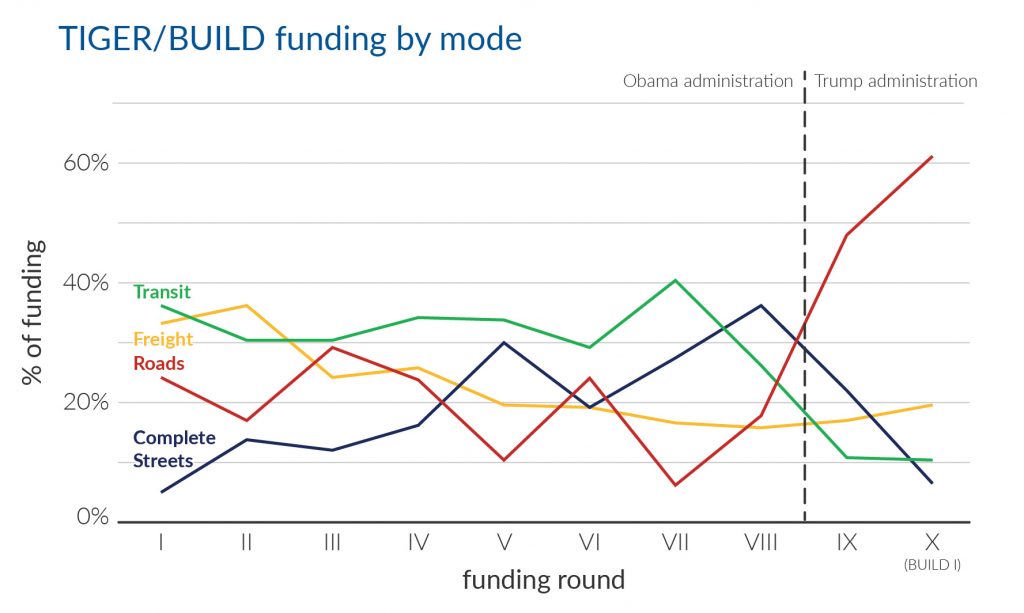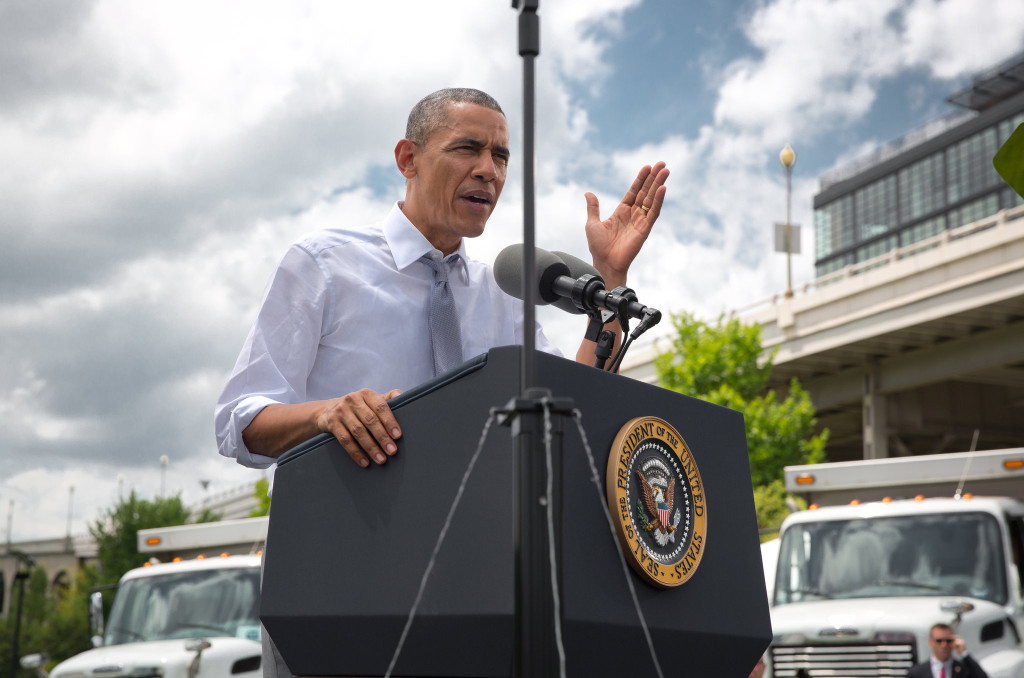
Obama budget cues start of serious negotiations over transportation funding

With the release of his budget proposal yesterday, President Obama at last offered some specifics on his plan to use the repatriation of taxable corporate profits to fund transportation. In doing so, he staked out a starting point for real-world negotiations over a possible six-year transportation bill – the first time such a prospect has seemed remotely realistic in six years.
His gambit joins a burgeoning set of transportation funding proposals in Congress (more about these later in this post), another hopeful sign that lawmakers are taking the issue seriously.
The less good news, of course, is that those negotiations over tax reform and transportation funding – to say nothing of policy – are almost certain to last beyond the May 31 expiration of the current law, MAP-21. That means another extension and lingering uncertainty until this can be wrestled to the ground.
With the addition of revenues from taxing American profits parked overseas, the Obama budget looks to invest $94.7 billion in fiscal 2016, nearly double today’s level of just over $50 billion. Invested along the lines of his GROW America Act, this would represent a 25 percent increase for the highway program and more than 70 percent for transit, which today is wildly oversubscribed.
All told, the Obama plan would authorize $478 billion for a six-year program of investment, $176 billion over the levels of MAP-21, and $76 billion more than the four-year version of GROW America released last spring. About $240 billion of that is from expected gas tax revenue. Placing a mandatory 14 percent tax on roughly $2 trillion in earnings held abroad by U.S. multinationals would yield about $238 billion, the Administration estimates.
The plan would make the TIGER grant program a permanent feature, funded at $1.25 billion a year, and would continue funding planning grants for planning walkable neighborhoods around transit stops. It also would establish passenger rail and multimodal accounts within the former Highway Trust Fund (HTF), now reconstituted as the Transportation Trust Fund. It would create a multimodal freight program, funded at $1 billion in 2016, and continue to promote the accelerated, inter-agency reviews to get projects moving faster.
While Republicans criticized many features of the Administration budget, the notion of using corporate tax reform to fund transportation seems to have growing bipartisan support, as support for raising the gas tax struggles to take hold.
Last week, the unlikely pairing of Sens. Rand Paul (R-KY) and Barbara Boxer (D-CA) announced they would introduce the “Invest in Transportation Act”, a plan to offer an enticement tax rate of 6.5 percent on corporate earnings returned to the U.S. from abroad, with all proceeds going to the Highway Trust Fund. Because it is voluntary, the exact amount is uncertain, but the senators have said they hope it can make up for flat or declining gas tax revenues.
On the House side, Reps. John Delaney (D-MD) and Richard Hanna (R-NY) have introduced the Infrastructure 2.0 Act, (HR 625), under which existing overseas profits would be subject to a mandatory, one-time 8.75 percent tax. This is expected to yield $120 billion, sending enough of that to the Highway Trust Fund to cover the gap between anticipated gas tax in-take and spending at current levels plus modest growth.
The bill also directs $50 billion of the $120 billion to capitalize an infrastructure bank called the American Infrastructure Fund (AIF) that could provide financing to transportation, energy, communications, water and education projects. Rep. Delaney establishes an AIF in another bill submitted last year along with Rep. Mike Fitzpatrick (R-PA), who reintroduced their “Partnership to Build America Act” (HR 413) on Jan 20. State and local government entities, nonprofit infrastructure providers, private parties, and public-private partnerships all would be eligible to apply for AIF financing. Through bond sales, the fund would be leveraged at a 15:1 ratio to provide up to $750 billion in loans or guarantees.
Not everyone in Congress has given up on the bird-in-the-hand funding source – the gas tax. Rep. Earl Blumenauer (D-OR), is set to reintroduce his UPDATE Act, which would hike the per-gallon tax by 15 cents, with 5 cent increases unfolding over the next three years, and index the overall tax to inflation. In the Senate, Senator Tom Carper (D-DE) is working with a bipartisan group to introduce a gas-tax bill, expected later this month.
Although more of an aspirational bill than a funding measure, Senator Bernie Sanders (I-VT) last week introduced his Rebuild America Act. Designed to illustrate the scale of investment the senator says we need, it calls for providing an additional $1 trillion in infrastructure investments over the next five years for roads, bridges and transit, passenger rail, airports, water infrastructure, marine ports and inland waterways, national parks infrastructure, and broadband and electrical grid upgrades.
It would add $735 billion to surface transportation investments over the next 8 years, with an additional $75 billion a year for the HTF. It also would capitalize a National Infrastructure Bank with $5 billion per year for fiscal 2015-19, estimated to stimulate more than $250 billion in investments. It provide for $2 billion more for TIFIA loans and $5 billion a year for TIGER.
And it makes all the other proposals look like skinflints in comparison.
At last, Congress and the White House appear to have moved transportation to a front-burner issue this year. With the Obama proposal as a strong starting place, here’s hoping negotiations proceed swiftly and in good faith so our communities can continue to plan, maintain and build for continued prosperity.



